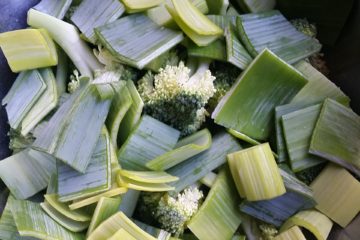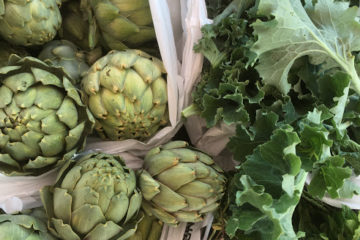Written by Nhu Nguyen, Education and Curriculum Development Intern
During the month of November, Each Green Corner covered topics relating the aging population and food insecurity. There are many hindrances that can obstruct seniors from accessing nutritious foods in metropolitan areas — ranging from financial hardship to mobility and spatial challenges. However, we can respond to these issues by challenging our current food systems and furthering community efforts that equitably localizes fresh food production and distribution. By bringing attention to how the aging population is affected by food insecurity, we wanted to prod our community members to reimagine how their current (and potential) green spaces can be more sustainably managed to make a difference.
As the month closes, I had the opportunity to reflect on gardening models that I have learned from important seniors in my life — my grandparents. Coming from a rural background in Vietnam, adjusting to the urban lifestyle in Silicon Valley was a challenge for my grandparents. Readily packaged meats and neatly bundled produce in chain grocery stores starkly contrasted with the vibrant farm-to-stand fish markets that my grandparents were used to. As nostalgia for warmer climate, tropical fruits, and familiar farmlands struck them, they knew that they had to find ways to call this foreign land their new home.
To cultivate a sense of home, my grandparents utilized their garden to grow familiar vegetables from Southeast Asia. Although the San Francisco Bay Area’s climate is far from tropical, its summer seasons are still productive for many types of Southeast Asian produce to grow. My grandparents were most successful in growing long Trái bầu or Calabash in their gardens. Growing Calabash was a process that helped my grandparents connect to the land they were living on, and it also provided them delicious and nutritious foods.
Calabash is an unapologetic spectacle in any garden. As a vertically climbing vegetable, Calabash needs ample space for its vines and fruits to grow on a tall arbor trellis. It is a very popular vegetable in Vietnam, and is often used to cook soup or to stir fry with various proteins. Though growing it can be tough at first, the gratification of harvesting its fruits in the summer is definitely worth it.
Growing:
Calabash seeds need to be extracted from mature Calabash gourds or (to start off) obtained from a local nursery. The seeds can be planted in individual pots in a greenhouse during the end of winter/beginning of spring. Since the vegetable needs a long and warm growing season, it is best to sow the potted plants after the last frost in late spring or early summer (don’t forget your trellis). Calabash requires very fertile soil and adequate watering in order to grow healthily. You can guide the vine to follow your upward trellis in the beginning stages. During the summer, you will be able to harvest bountiful fruits from the plant, as well as provide your garden with great shade from the vines stretching across the arbor trellis.
Check out these videos below to watch the Calabash growing process:
Sowing Potted Calabash into Fertile Soil
Recipes:
For information on how to cook Calabash with pictures and further instructions, feel free to check out some of the links below:
Calabash and Egg Stir Fry (In Vietnamese)
Sources:
Calabash Long. (n.d.). Retrieved November 20, 2020, from https://www.kitazawaseed.com/seed_199-36.html
Gierlach, K. (2019, December 28). Bottle Gourd or Calabash. Retrieved November 20, 2020, from https://www.spadefootnursery.com/blog/2019/12/28/bottle-gourd-or-calabash



0 Comments